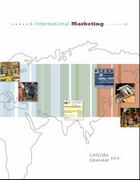Task
1. Assume a consumer has as preference relation > represented by u(1, $2) = (ri + 12)" for a E (0, 1) and co > n > 2, with r E C = RY . Answer the follow- ing: a. Show the preference relation that this utility function induces "upper level sets" that are convex -> if U(x) is convex for any Xex b. Show the preference relation these preferences represent are strictly monotonic. c. Give another utility function that generates exactly the same behavior as this one. Prove this is the case. d. Now, let n = 1. Compute the MRS between good 1 and good 2, and explain why it coincides with the slope of an indifference curve. (Hint: using the implicit function theorem for the mapping u(1, $2(21, u)) - u = 0 where u = ru +12 is the level of utility for the partial indifference curve. See Sundaram or later in my lecture 2 slides for a definition/statement of the implicit function theorem...or google it.) e. Write down the consumer's optimization problem, and construct the first order conditions for this problem. f. Define the value function for this consumer (follow my notes in class). g. Now, write down the expenditure minimization problem for this con- sumer, and show from this dual formulation we can obtain the exact same optimality condition that the MRS12 = _ where p is the relative price of good 1 to 2.Suppose the representative firm produces with the following production function: Y = =F(K, Nd) = 270.5(Nd)0.5 where Y is output of consumption goods, K is the capital stock, N is the labor input, and z is the total factor productivity. (1) Assume that z = 6, K = 4, the wage rate is 3. Compute the optimal labor and profit. (15 points) (2) Now suppose the firm increases its capital stock to 9, i.e. K =9. Compute the new optimal labor and profit. (15 points) (3) Compare (2) and (1), how do the firm's optimal labor and profit change? Graph the firm's production function and the variable cost function in terms of labor. Label the the optimal choices of (1) and (2). (20 points)1) Consider a one-period economy with a single representative consumer, a single representative firm and the government. The representative consumer derives utility from consumption c and leisure : u (c, I) = Inc The firm produces output Y using capital K and labor N according to Y = ZK NIG, where z is the total factor productivity and a is the Cobb-Douglas parameter. The firm maximizes profits it which are then transferred to the representative consumer. The government balances the budget using lump-sum taxes T on the representative consumer to finance government spending G. The hourly wage in this economy is w and the consumer has h hours (/=16) to divide between leisure and labor. (i) Write down the consumer's budget constraint and the firm's profits function. (ii) Assume that w = 10, z = 20, a = 0.3, and K = 1. Calculate the number of hours that the firm would like to hire and the profits of the representative firm. (ii) Assume that government spending G is 10, the representative consumer receives the profits that you calculated above, earns hourly wage w = 10, and has h = 16 hours to divide between leisure and labor. Calculate how many hours of work the representative consumer would like to supply in the market. (iv) In the economy described above, () the government budget is balanced, (ii) the representative consumer maximizes lifetime utility given the budget constraint and w, and (iii) the firm maximizes profits given the production function and w. Is this a competitive equilibrium? Why or why not









